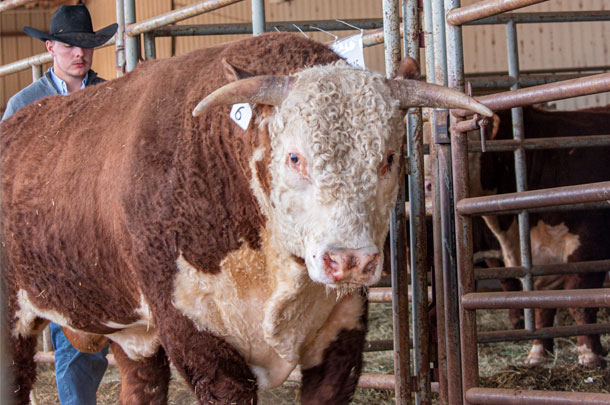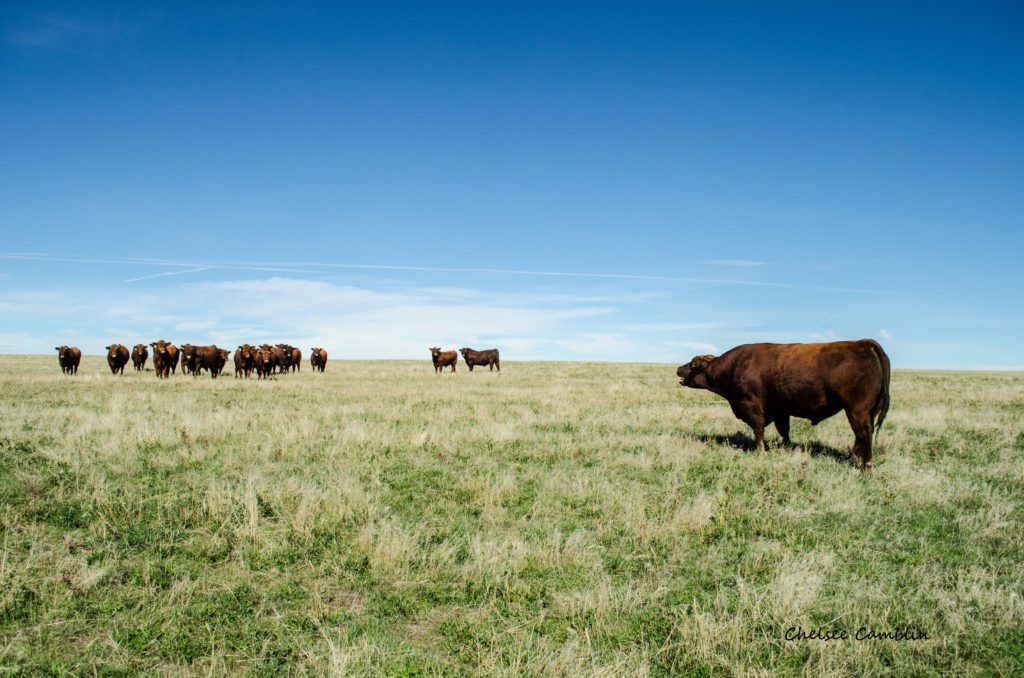Jordan Thomas for Progressive Cattle Published on 15 October 2019
Bulls are an investment, and just like all investments, some pay off and some don’t.
If you are making a bull purchase this fall, you want to have some confidence you are making a good investment, so let me ask you this: Do you approach your bull-buying with the same level of due diligence you approach your other investments?
You wouldn’t (or at least I hope you wouldn’t) buy a stock, bond or other investment without seeing some numbers on its potential performance. Let’s hold your bull investment decisions to the same kind of standards. What kind of potential returns are you expecting? In most cases, you are about to sink several thousand dollars into a bull investment. What is that bull going to do for your bottom line?
First, get a handle on what your natural service program actually costs. It’s tempting to think the purchase price of the bull is the cost of the bull. That is how we refer to bulls at the coffee shop: “A $7,000 bull.” In reality, purchase price alone doesn’t tell you much about an investment. Annualizing the cost of the bull can be a helpful way to think through a bull’s cost structure. Remember, bulls are a depreciating asset. Assuming a bull doesn’t die on the ranch, you are likely going to sell him at a pound price after his productive lifespan. Take the initial purchase price minus that salvage value, and divide it by the years the bull is owned. That is the annual depreciation of the bull, and it really needs to be taken into account as a yearly cost of a natural service program. Depreciation isn’t just a made-up word we use during tax season; it is a better way to assess true costs.
Depreciation is not the only cost to consider. Have you ever put a pencil to all the other annual costs of maintaining a bull on the farm? I have, and I didn’t like the number I came up with. Feed, even if it is grazed forage, is not free. You also have all of the costs associated with general care and health. There are also hidden costs that are real but often ignored, in part because of the difficulty in calculating them. Those include things like opportunity cost, labor and risk of death loss. Just about every bull cost calculator I have seen also includes a line in the budget for fixing everything the bull tears up. Yes, that gate, mineral feeder or stretch of fence the bull took out is a cost of natural service. Find one of these bull-cost calculators and put in your numbers, or get out your pencil and run the numbers the old-fashioned way. Your annual bull costs are more than you think.
On the revenue side, natural service bulls really only provide two sources of potential returns: they service cows, and they contribute genetic merit. They can do a good job at both, but the question is how good of a job and at what cost? In terms of servicing cows, have you ever gone through your records and tried to figure out how many calves you actually get out of a natural-service bull on average? Some bulls never service a cow and others fail a breeding soundness exam or break a leg the second year after purchase. Those underperformers drag down the average. If you go through your production records, you will probably be shocked how few calves are actually produced by any one bull. On a per pregnancy basis, natural-service bulls are actually a pretty expensive way to breed cows. If you haven’t looked into estrus synchronization and artificial insemination (A.I.), I would encourage you to run those numbers for comparison. Getting those A.I. conceptions early in the breeding season pays off big time, and in many cases a timed A.I. first service reduces the number of natural-service bulls you need to turn out.
Whether you are buying natural-service bulls or semen from A.I. sires, you should buy the best genetics you can afford. By definition, the genetic merit of the bull directly determines half the genetic merit of his calves. If you are keeping your own replacement heifers rather than purchasing females, most of your genetic progress really happens through your bull decisions. So, again, buy the best genetics you can afford. Just make sure you can afford them. That question involves not only a consideration of cost, but a consideration of potential returns. A good starting point is to evaluate a bull’s overall genetic merit for profitability. Of course, expected progeny difference (EPD) values are your best tool to evaluate a bull’s actual genetic merit. To get more at the profitability question, look into use of an Economic Selection Index. An index is calculated from the bull’s EPDs, factoring in the real-world economic importance of each trait in the index. Just be sure you use an index that makes sense for your operation based on the way you market calves.
The last point I will leave you with is an even more radical one, but I stand behind it: only buy a natural-service bull if it has been genomic tested. The time has come to demand that kind of information. Depending on the trait, genomics adds about a calf crop worth of data to the accuracy of an EPD. Accuracy is a measure of how confident we are the EPD represents that animal’s true genetic merit. Simply put, genomic tests shift our estimates of a bull’s merit to become more correct, while increasing our confidence about those estimates. If it is possible to know this much about a bull before he ever has calves, why would you buy a bull that doesn’t have genomic-enhanced EPDs? That is what we preach here in Missouri now, and we are practicing what we preach. This year, our Show-Me-Select Replacement Heifer Program announced a requirement that any natural-service bulls used on heifers in the program are required to have genomic-enhanced EPDs.
Whether you are buying a bull’s genetics in a straw of semen or on the hoof, run the numbers. Reproductive and genetic technologies pencil out, and you’ll find you don’t want to leave that kind of potential profit on the table. ![]()
![]()
PHOTO: Buying bulls is an investment that shouldn’t be taken lightly. Staff photo.


-
Jordan Thomas
- Assistant Extension Professor and State Beef Reproduction Specialist
- University of Missouri – Division of Animal Sciences









